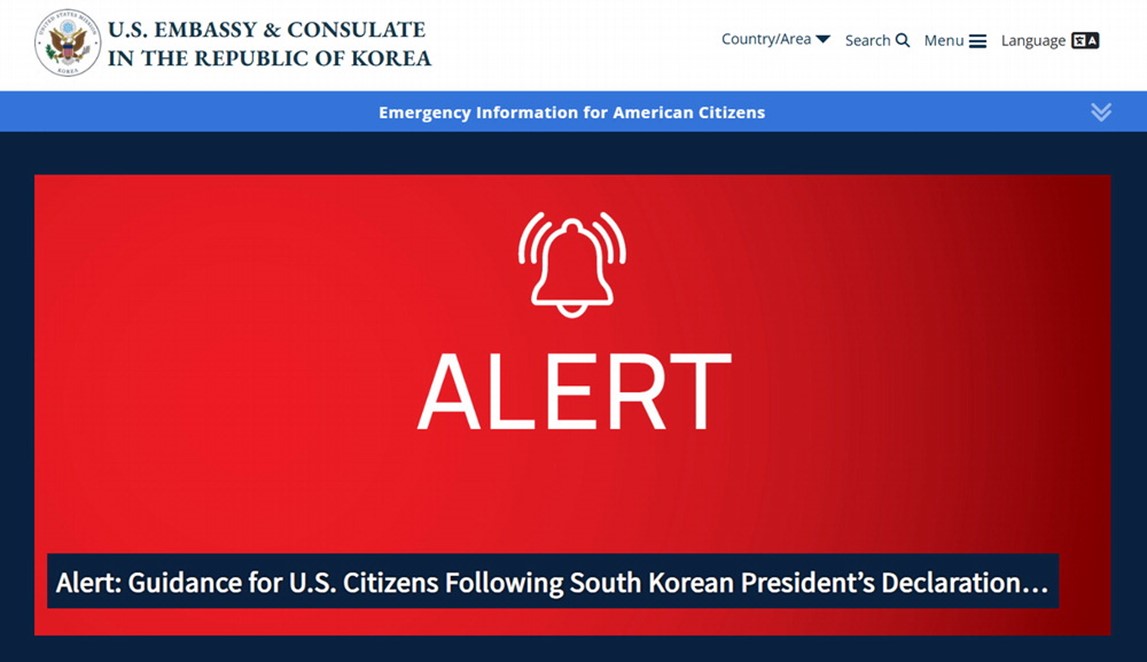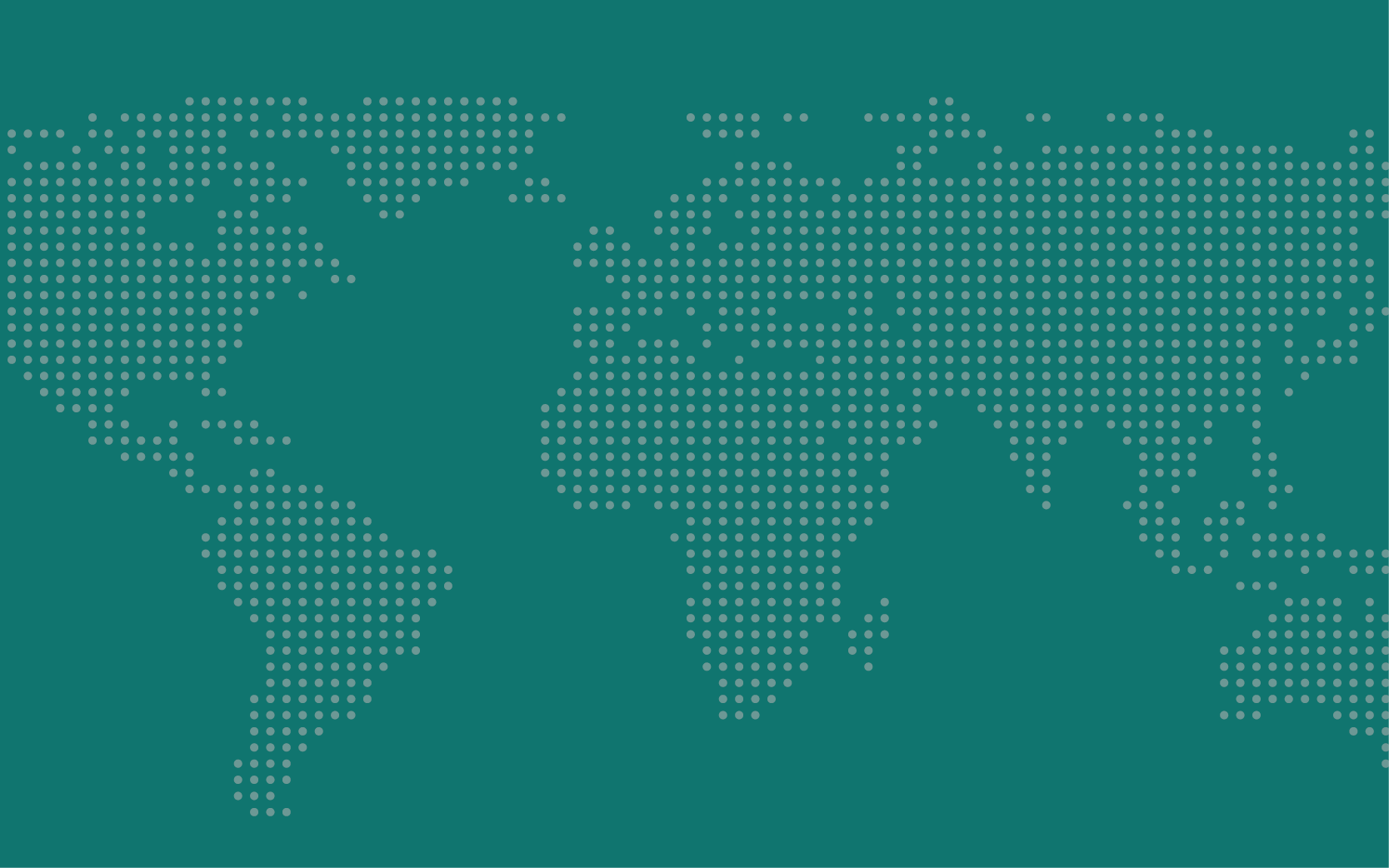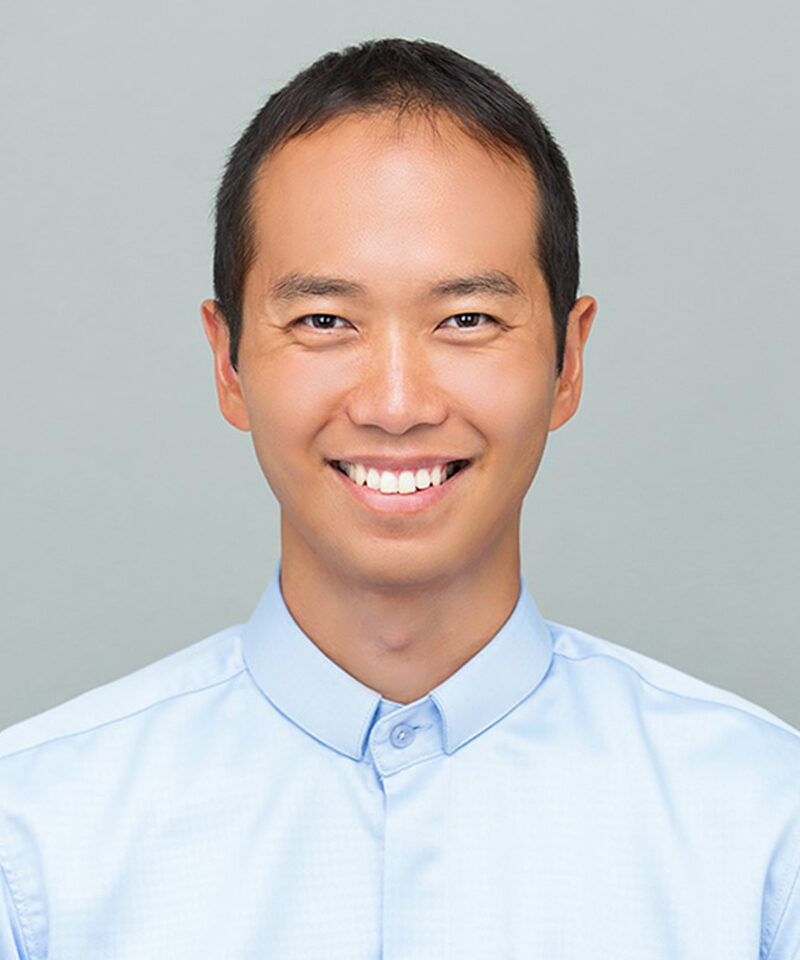Martial Law and the Future of U.S.-ROK Relations
Seoul is at a critical moment. Key government offices, including the president, prime minister, head of the National Police Agency, and ministers of defense, justice, and interior and safety, are vacant. Society is deeply divided. The streets are filled with supporters and opponents of President Yoon Suk-yeol’s attempt to impose martial law, increasingly animated against each other.
The implications of the martial law bid on South Korea’s diplomacy and security, however, have not been widely discussed in the media. A closer look reveals uncertainties but strong continuities for the alliance relationship between the Republic of Korea (ROK) and the United States.
The Immediate Chaos
On December 3, the night martial law was imposed, the ROK’s foreign minister, Cho Tae-yul, did not answer a phone call from then-U.S. Ambassador Philip Goldberg. Instead, Goldberg received a call from an official at the ministry who simply read the martial law declaration to him.
In Washington, the State Department contacted the ROK embassy, which was unaware of what was evolving in its home country. Ambassador Goldberg managed to speak with one official at the Presidential Office in Seoul, who also appeared to know nothing about the details of the situation. The U.S. ambassador raised his voice over the phone, expressing his anger and frustration. Later, Minister Cho explained to a parliamentary committee that he avoided speaking with the ambassador that night to avoid misleading the United States.
The United States, South Korea’s sole treaty ally, was not informed of the movement of the ROK’s 1,500 elite troops. Throughout the night, Ambassador Goldberg stayed in close contact with General Paul LaCamera, then commander of U.S. forces in Korea. There are unverified reports that U.S. troops at Camp Humphreys in Pyeongtaek were put on alert. Even so, the readiness of U.S. troops is not surprising, given that the martial law command had placed the ROK’s entire military on Alert Level 2.
The next day, the U.S. embassy in Seoul suspended all general consular services and urged people including Americans in Korea to stay home for safety. U.S. Deputy Secretary of State Kurt Campbell publicly commented on the emergency martial law, expressing “grave concern” and stating that the president had “badly misjudged” the situation.

The U.S. Embassy in Seoul posted a red alert and a warning notice in the morning on December 4, 2024, and stopped its consular businesses for anyone including U.S. citizens.
The silence between the two allies did not last long, however. Foreign Minister Cho met with Ambassador Goldberg on December 5 and 8. Reportedly, Cho was among the cabinet members who strongly opposed martial law, helping to ease Washington’s concerns. While Campbell called the event “deeply problematic” and “deeply illegitimate,” he reaffirmed the U.S. commitment to the alliance. The White House sought to prevent any perception of a U.S.-ROK divide with its relatively reserved statement on the situation.
The Short-Term Perspective
Despite the early efforts by both states to restore communications and minimize damage to alliance solidarity, some policy discoordination between the two governments is likely amid dramatic political transitions in Seoul and Washington. Nevertheless, both the Biden and Trump administrations have had to adapt to the evolving political situation in Seoul.
For instance, after the ROK’s National Assembly passed a resolution to impeach President Yoon on December 17, Campbell remarked that the Biden administration would fully support Prime Minister Han Duk-soo’s interim role. However, two weeks later, the opposition parties voted to impeach Han as well.
With growing uncertainty in the ROK’s domestic politics, the United States broadened its diplomatic efforts, sending Ambassador Goldberg to meet with key actors across the parties, including opposition leader Lee Jae-myung. At the meeting with Lee on December 24, the U.S. ambassador described the martial law declaration with terms like “regret” and “sad.” Meanwhile, both the ROK’s ruling and opposition parties sought to increase their legitimacy by gaining the support of the United States in the eyes of the Korean public. As a result, the political tension and policy confusion created by the loose coalition of the interim government, the PPP, the DP, and the U.S. government is likely to continue until the Constitutional Court delivers its final verdict on the impeachment.
For the next 2–3 months, the ROK government will emphasize the resilience of its democratic system and defense readiness despite the ongoing political crisis. President Yoon had hosted the third Summit for Democracy in March 2024, earning praise and trust from President Biden as a democratic leader. The use of democratic values in diplomacy was part of the ROK government’s vision for achieving a “global pivotal role.” However, the December 3 martial law bid undermined these efforts. On December 5, a deputy spokesperson of the Ministry of Foreign Affairs, seemingly acting on his own initiative, issued press guidance to foreign reporters, justifying the martial law imposition as necessary to protect the liberal-democratic constitutional order. At the time, a series of planned visits by foreign leaders and senior officials were canceled.
The ministry now strongly denies the content of the press guidance as its official stance. The deputy spokesperson has been suspended from his position and is under investigation. Instead, Cho addressed the foreign press on December 18, stating that “subsequent developments also conversely demonstrated the resilience of democracy and the rule of law in Korea.” For him, the current situation represents a process of “self-correction” within the democratic system.
The Biden administration supported the ROK’s effort to reshape its image not as a beleaguered democracy, but as a resilient one. Secretary of State Anthony Blinken, during the press availability following the U.S.-ROK foreign ministers’ meeting in Seoul on January 6, made the following comment stressing the democratic restoration of the ROK’s political system:
“Korea’s democracy has been tested in recent weeks, just as Americans’ democracy has faced challenges throughout our history. But you are responding by demonstrating your democratic resilience. The United States has full confidence in South Korea’s institutions, and we reaffirm our unwavering support for the Korean people as they work tirelessly to uphold those institutions. We trust that the Republic of Korea, as a leading global democracy, will proceed in full accordance with its constitution and the rule of law.”
The Trump administration may not share the Biden administration’s emphasis on the importance of democratic values in shaping the U.S.-ROK alliance. Trump’s silence on the political crisis seems to be welcomed by the ruling PPP. Nevertheless, the Trump administration is likely to continue the Biden administration’s ad hoc management approach toward a broad political network of South Korean leaders. In fact, Trump invited both ruling and opposition elites to his inauguration.
The biggest concern for South Korea, however, is the Trump tariffs and the U.S.-China trade war, which could have detrimental effects on its economy. In the absence of effective leadership to address these external challenges, Seoul would need to rely on technocrats and business leaders to minimize the economic damage. In this context, the interim government may shift its rhetoric from emphasizing democratic resilience to highlighting South Korea’s indispensable role in the global economy.
On the security side, for the next 2–3 months, the ROK government will strive to maintain strong U.S. extended deterrence against North Korea. The Ministry of Defense is in disarray, and morale is low due to the arrests and suspensions of key commanders, including the chief of staff of the army and the commanders of the Defense Counterintelligence, Capital Defense, Army Special Warfare, and Korea Defense Intelligence Commands.
Foreign Minister Cho emphasized continuity in the defense posture and readiness between South Korea and the United States:
“The Korean Government is maintaining a robust security posture based on a strong ROK-U.S. alliance. We will manage Korean Peninsula affairs in a stable manner, while remaining as ready as ever to respond firmly in the event of North Korea’s provocations.”
In the meantime, General Xavier Brunson was appointed the new commander of U.S. forces in Korea on December 24. One may question the wisdom of his inauguration amid the ongoing political crisis. However, both governments would argue that the transition in command reflects the alliance’s readiness for any contingency and underscores the ironclad U.S. commitment to ROK security. For the same reason, Ambassador Goldberg departed for the United States on January 7 as planned. One week later, Joseph Yoon arrived in Seoul as acting U.S. ambassador.
North Korea’s military involvement in Ukraine has ironically benefited South Korea and the United States, as Pyongyang’s primary attention is now far from the peninsula. When North Korea launched its alleged hypersonic missiles into the East Sea on January 6 and ballistic missiles on January 14, U.S.-ROK-Japan intelligence sharing functioned seamlessly, demonstrating their robust defense cooperation. The ROK’s maintenance, repair, and overhaul (MRO) operations for U.S. naval ships, initiated by the Biden administration but likely to be continued by the Trump administration, would reassure the South Korean public of U.S. involvement on the Korean peninsula.
The real short-term challenge for the ROK’s security would stem from the Trump administration’s pressure to increase South Korea’s contribution to defense cost-sharing, as well as potential Korea Passing, where bilateral arms control talks between Trump and North Korean leader Kim Jong-un could overlook ROK security interests. Whether the United States and South Korea will conduct their regular joint military exercises Freedom Shield in March and Ulchi Freedom Shield in August, will serve as a litmus test for future military cooperation between the two countries.
The Long-Term Perspective: Three Scenarios
The longer trajectory of Korea’s future is more uncertain. Three potential scenarios appear likely. First, within 2–6 months, the Constitutional Court may reject the National Assembly’s impeachment of President Yoon and restore him to office. Recent surveys indicate that President Yoon’s popularity has exceeded 40 percent, marking a more than 20 percent increase compared to before the martial law incident. Some analysts consider this scenario the worst in terms of South Korea’s political stability, as it would leave the ROK’s domestic politics in turmoil, both in the assembly and on the streets. It is likely that President Yoon would become a serious lame duck. Even if he regained popularity and political power, domestic politics would become more volatile, marked by extreme polarization and heightened hostility.
The second scenario is the ultimate impeachment of President Yoon, followed by the return of Prime Minister Han Duck-soo as acting president, who would then oversee the presidential election. The ROK Constitution mandates that a presidential election be held within 60 days to fill the presidency. This scenario would be favored by some members of the ruling PPP, as it would allow them to eliminate the “Yoon risk” while continuing to accuse the DP of recklessly abusing its power in impeaching government leaders. Given opposition leader Lee Jae-myung’s legal trials for the violation of an election law and other cases, the ruling party may have a chance to win the next presidential election despite the martial law crisis. Nevertheless, it is likely that there would be a large-scale purge or systematic disadvantages in personnel matters of military elites who graduated from the Korea Military Academy for their leading roles in the implementation of martial law.
The third scenario is the one most favored by the opposition DP and its supporters: the Constitutional Court upholds the parliament’s impeachment proposal for both the president and the prime minister, and the next presidential election is held under the current leadership of acting president Choi Sang-mok, who lacks strong political clout as a technocrat. If this happens and, by any chance, Lee becomes the next president as the current public survey points to, his foreign policy direction will be interesting to see. He is a pragmatist; “rigid ideology and empty sloganeering won’t help,” he wrote in 2022, “what the country needs is pragmatism and a focus on problem solving.” One might even argue that he is a shrewd Machiavellian who has maintained his popularity despite two previous failed presidential campaigns and multiple legal challenges. Lee is against hosting the Terminal High Altitude Area Defense (THAAD) system and strongly opposed to the ROK sending military observers to Ukraine despite the deployment of North Korean soldiers to the battlefield. Under his presidency, the Korean government may adopt the DP’s traditional balancing policy between the United States and China, a nationalistic stance against Japan, and a pro-engagement policy with North Korea. His government would also likely seek the transfer of wartime operational control.
Although the DP is currently united for the ultimate impeachment of President Yoon, the party is likely to experience factional conflict once impeachment is completed. Lee could distance himself from the party line by strengthening the U.S.-ROK alliance rather than blindly following the party’s left-wing ideology, especially if he perceives greater benefits to the economy and his political leadership. Technocrats, such as former diplomat Wi Sung-lac, would serve as key advisors on national security. Regarding the ROK’s nuclear policy, the DP, in general, opposes the development of indigenous nuclear weapons and is strongly hostile to the reintroduction of U.S. tactical nuclear weapons to Korea. The party is also generally opposed to nuclear power plants. However, Lee is neither a strong environmentalist nor an anti-nuclear ideologist. He may pursue policies to enhance the ROK’s nuclear latency and/or develop nuclear-powered attack submarines in consultation with the Trump administration. He is a supporter of a “small deal” with North Korea as opposed to a “big deal” on Pyongyang’s denuclearization. Lastly, trilateral security cooperation between Seoul, Washington, and Tokyo is less likely but would not be completely off the table for a Lee government.
Again, the long-term outcome will depend on what the Constitutional Court decides, along with many other variables, but the world will have a clearer picture by August at the latest. This period will become a crucial test as well for the U.S.-ROK alliance. When President Trump visits the ROK in November to attend the Asia-Pacific Economic Cooperation (APEC) summit, South Korean society should have stabilized from the martial law bid crisis. At least, one hopes.
Chansong Cameron Lee is a research fellow at the Sejong Institute, Republic of Korea. The views expressed here are those of the author alone and do not reflect the official stance of the Sejong Institute. Lee can be reached at clee@sejong.org.
Thumbnail Image: Anti-martial law protestors wave flags, South Korea 2024. (Wikimedia Commons)

Global Policy At A Glance
Global Policy At A Glance is IGCC’s blog, which brings research from our network of scholars to engaged audiences outside of academia.
Read More